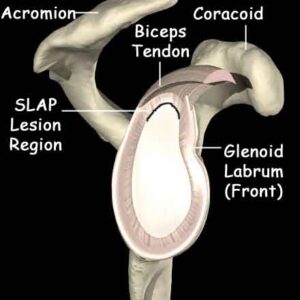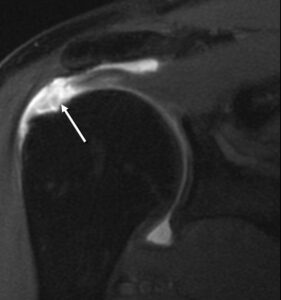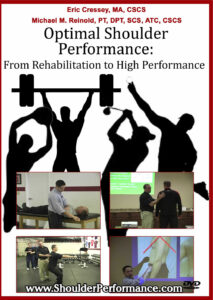Healthy Shoulders with Terrible MRIs?
In the same grain as Monday’s post on lower back pain, today, I thought I’d highlight some of the common findings in diagnostic imaging of the shoulder, as these findings are just as alarming.
Do you train loads of overhead throwing athletes (especially pitchers) like I do? Miniaci et al. found that 79% of asymptomatic professional pitchers (28/40) had “abnormal labrum” features and noted that “magnetic resonance imaging of the shoulder in asymptomatic high performance throwing athletes reveals abnormalities that may encompass a spectrum of ‘nonclinical’ findings.” Yes, you can have a torn labrum and not be in pain (it depends on the kind of labral tear you have; for more information, check out Mike Reinold’s great series on SLAP lesions, starting with Part 1).

This isn’t just limited to baseball players, either; you’ll see it in handball, swimming, track and field throwers, and tennis as well. And, it isn’t just limited to the labrum. Connor et al. found that eight of 20 (40%) dominant shoulders in asymptomatic tennis/baseball players had evidence of partial or full-thickness cuff tears on MRI. Five of the 20 also had evidence of Bennett’s lesions.
The general population may be even worse, particularly as folks age. Sher et al. took MRIs of 96 asymptomatic subjects, finding rotator cuff tears in 34% of cases, and 54% of those older than 60 – so if you’re dealing with older adult fitness, you have to assume they’re present in more than half your clients!

Also, in another Miniaci et al. study, MRIs of 30 asymptomatic shoulders under age 50 demonstrated “no completely ‘normal’ rotator cuffs.” People’s MRIs are such train wrecks that we don’t even know what “normal” is anymore!
As is the case with back pain, these issues generally only become symptomatic when you don’t move well – meaning you have insufficient strength, limited flexibility, or poor tissue quality. For more information on how to screen for and prevent these issues from reaching threshold, check out Optimal Shoulder Performance from Mike Reinold and me.



